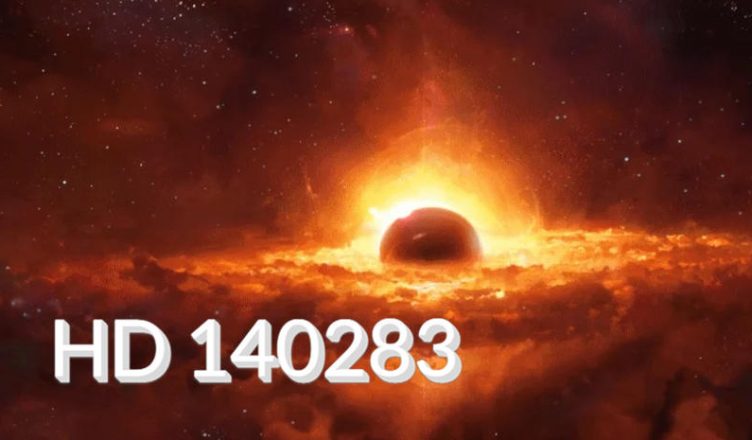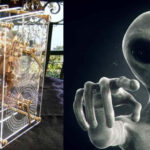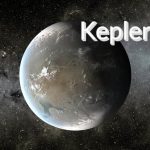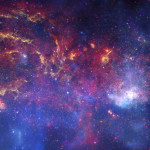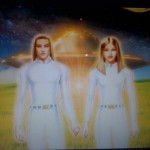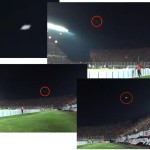In the distant cosmos, there exists an exceptionally ancient star known as ‘HD 140283,’ affectionately nicknamed ‘Methuselah.’ This enigmatic star resides in the constellation Libra and is situated approximately 190 light-years away from our planet. Its presence has piqued the keen interest of scientists, as the age information it carries has the potential to revolutionize our understanding of the origins and evolution of the universe.
The age of this star has become a captivating enigma. Based on the data we have acquired through the cosmic microwave background radiation, the universe’s birth is estimated to have occurred around 13.8 billion years ago. However, ‘HD 140283’ has been determined to be older, with an astonishing age of 16 billion years. This discovery appears astonishing, as a single star cannot possibly be older than the entire universe. This intriguing paradox has sparked extensive scientific exploration and debate.
The Enigma of HD 140283:
The European Space Agency’s “Gaia High Precision Parallax Collecting Satellite” has detected a peculiar star in the constellation Libra, located approximately 190 light-years away from Earth. This star, known as “HD 140283,” is traveling at a staggering speed of up to 1.3 million kilometers per hour. Observations have revealed that this star formed about 16 billion years ago, which is intriguing as the cosmic microwave background radiation suggests the universe is approximately 13.8 billion years old. How could this star, with such a low metal content, primarily composed of hydrogen and helium and very little iron, be older than the universe itself? It raises questions about either the star’s age estimation being incorrect or the universe’s age calculation being off.
HD 140283, also known as “Methuselah,” is a low-metallicity subgiant star located in the constellation Libra, near the border with the constellation Serpens, at a distance of about 190 light-years from Earth. With a visual magnitude of 7.205, it is visible even with binoculars. It is one of the oldest known stars. The star exhibits a slight blueshift in its light, indicating it is moving toward Earth rather than away from it, and based on other vectors (proper motion), it could be a fast-moving star in astronomical terms. Early spectroscopic analyses by Joseph W. Chamberlain and Lawrence Aller showed its metal content is significantly lower than that of the Sun. Recent spectral analyses have found its iron content to be approximately 250 times lower than the Sun’s. It is one of the closest known low-metallicity (Population II) stars to Earth. This star was known as early as 1912 when W.S. Adams used the spectrograph at the Mount Wilson Observatory for astronomical measurements.
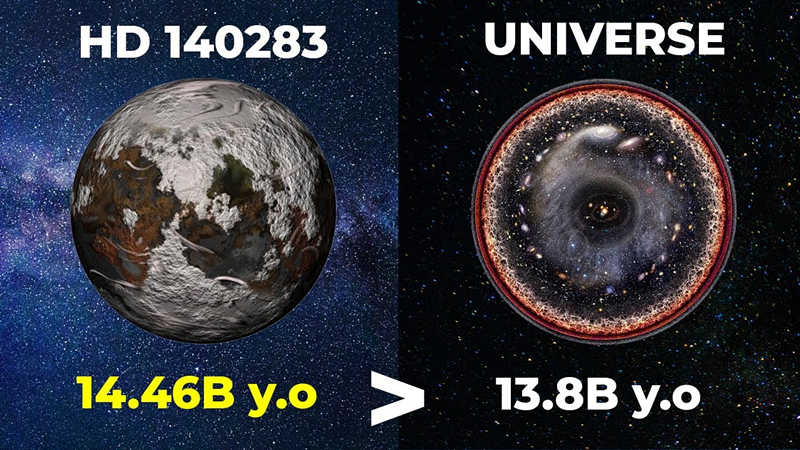
Observations of “HD 140283”:
Astronomers have repeatedly calculated the age of “HD 140283” by analyzing 11 sets of data obtained by the Hubble Space Telescope between 2003 and 2011. These data record the star’s position, distance, and emitted energy, allowing for more accurate age estimation through parallax, spectroscopy, and photometry measurements. The uncertainty in “HD 140283’s” age value partly arises from the precision errors in distance measurements, for example, accurately determining its luminosity, which would yield a more precise estimate of the star’s age. A higher luminosity value corresponds to a younger age.
Astronomers also observed the parallax effect on “HD 140283” by measuring its shift in the sky over a six-month period, caused by variations in Earth’s orbit. This method can measure the star’s distance from Earth.
HD 140283: A Star That Defies Age:
HD 140283 is neither a main-sequence star nor a red giant. Its initial position on the Hertzsprung-Russell diagram depends on the data, quantum mechanics-based stellar evolution models, and inferences from hundreds of thousands of stars. It has been explained through observations of stellar processes. It appears significantly aged. For field stars (as opposed to stars within clusters), there are seldom enough accurate brightness, surface temperature, and composition data to provide strong constraints on their ages. This is even rarer for stars in Population II, like HD 140283. A 2013 study using the precise guidance sensor of NASA’s Hubble Space Telescope measured the star’s precise parallax (and thus distance and luminosity) and estimated the star’s age to be 14.46 ± 0.08 billion years. Due to the numerical uncertainty, this age might conflict with the 2018 Planck satellite result of the universe’s age at 13.761 billion years ± 38,000 years. However, the latest models of stellar evolution suggest revising this star’s age to 13.7 or 12 billion years. The star was once dubbed “Methuselah” due to its age, and if the stellar evolution assumption is correct, it is believed to have formed shortly after the Big Bang in 2021. It is one of the oldest known stars of its time. The search for such extremely metal-poor stars indicates that almost all of these stars are anomalies in globular clusters and galactic halos, suggesting their survival as rare survivors of their generation. If this is the case, the earliest visual data on these stars may allow for independent, long-term measurements of the universe’s reionization (first star formation) phase, separate from theory and evidence. Most stars in Groups II and III are no longer observable. Some theories accept a universe age older than traditionally accepted, still consistent with observed early objects and early radiation redshift. There are also some non-standard models of the Big Bang/inflation theory, such as the steady-state and cyclic models. So far, there has been no accurate evidence from celestial objects that challenges the Planck results. Studying this star helps astronomers understand the early history of the universe. The low metallicity of stars like HD 140283, though minimal, provides insights into the rate of early nucleosynthesis (the “metallicity”) of elements beyond hydrogen and helium in local extinct III-star supernovae.
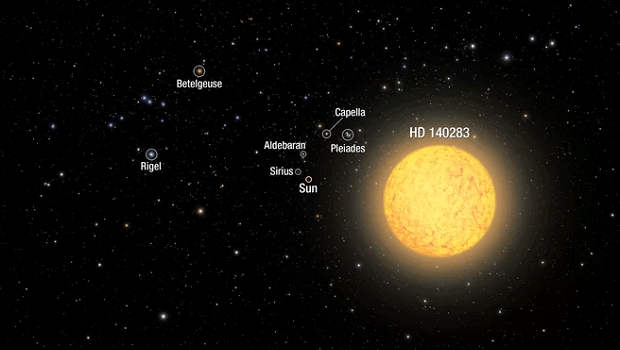
Theoretical Stellar Models Carry Uncertainty:
Models can show the rate of nuclear fusion reactions in a star’s core, and the sinking of elements in the outer shell is also essential. If residual helium in the outer shell sinks deeply, the hydrogen content involved in nuclear fusion decreases accordingly, shortening the star’s lifespan if burning is rapid. The oxygen content in “HD 140283” is higher than expected for its age. In the early universe, oxygen was not abundant, so the star’s actual age is indeed younger.
Through this series of calculations, scientists believe “HD 140283” was born 14.46 billion years ago, making it much younger now but still older than the universe. In 2014, scientists further narrowed this figure, confirming that “HD 140283” was born 14.27 billion years ago, reducing the error in the star’s age estimation to 7-8 billion years. Consequently, this star is no longer older than the universe.
Ancient Stars, Universe’s Age, and the Hubble Constant:
The phenomenon of ancient stars having ages close to the age of the universe suggests that the theory of the Big Bang is correct. Uncertainties always exist in observations, and, therefore, the ages of both entities ultimately match up. In July 2019, at the International Cosmology Conference in Santa Barbara, California, scientists claimed that the universe’s age, as measured from neighboring galaxies, is significantly younger than the age calculated from the cosmic microwave background, implying that the universe did not originate 13.8 billion years ago but 11.4 billion years ago. The scientists involved in this research, including 2011 Nobel laureate Adam Riess, based this conclusion on the perspective of cosmic expansion. However, the latest findings indicate that the rate of cosmic expansion (the Hubble constant) is 10% higher than the value derived from the cosmic microwave background, which suggests that the Hubble constant lies between 73 and 77 kilometers per second per megaparsec, showing that there is a discrepancy between today’s cosmic expansion rate and the rate inferred from early cosmological features. Accepted theories need to be reevaluated, and the mysteries related to dark matter and dark energy grow. A higher Hubble constant implies a shorter universe’s age. If the Hubble constant is 67.4 kilometers per second per megaparsec, it suggests that the universe originated 13.8 billion years ago. However, if it is 73 kilometers per second per megaparsec or even as high as 77 kilometers per second per megaparsec, it would indicate that the universe’s birth occurred no more than 12.7 billion years ago. Calculations based on these values suggest that “HD 140283” is once again older than the universe.
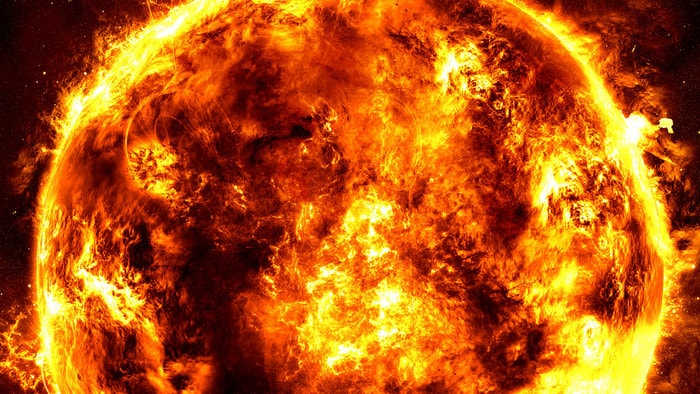
In 2019, a new study revealed a Hubble constant of 82.4 kilometers per second per megaparsec, which would mean the universe came into being just 11.4 billion years ago. Scientists believe that resolving this issue will depend on the development of cosmology and potentially uncovering gaps in our understanding, such as the strength of dark energy. Dark energy is the primary driving force behind cosmic expansion, and the appearance of the star “HD 140283,” while adding to the mystery of the universe, also enhances our deeper understanding of how the universe operates.
END:
Looking ahead for HD 140283, the scientific community will continue to conduct in-depth research on this ancient star to unravel the mysteries it holds and further explore its formation history and stellar evolution processes. With advancing technology, future astronomical observations and simulations will contribute to providing more precise age estimations to ascertain whether this star is truly older than the universe itself. Additionally, the study of HD 140283 will also aid in a deeper understanding of the early history and evolution of the universe, as well as crucial cosmological questions such as the rate of cosmic expansion and the actual age of the universe.
The presence of this star not only serves as a temporal marker for an ancient cosmos but also offers astronomers a significant subject for research to deepen our comprehension of cosmic evolution. As our knowledge of the universe continues to expand, we can anticipate further breakthroughs in unraveling the enigmas of ancient stars like HD 140283, further enriching our understanding of the cosmos.
More UFOs and mysterious files, please check out our YouTube channel: MysFiles
Is the moon artificial? Evidence Proves the Moon Was Unnaturally Formed
